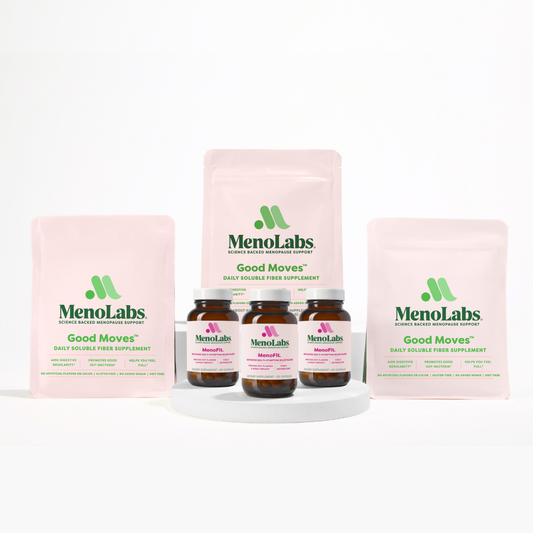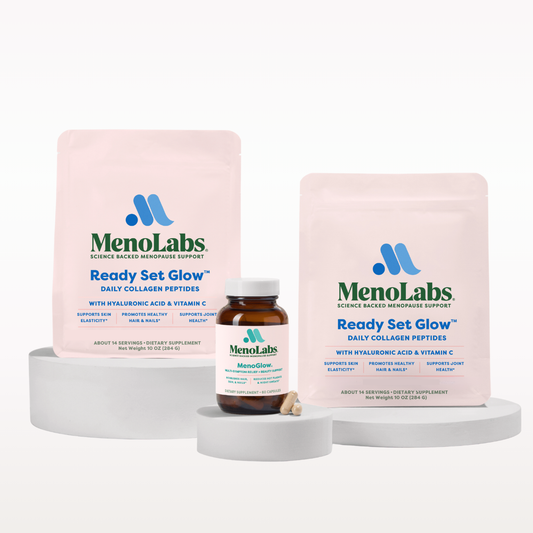
- Beauty
- Mood
Menopause Symptoms That Aren’t Always Talked About
We hear about hot flashes and mood swings during menopause nonstop. But, what about those other symptoms that people don’t share? Women are often misdiagnosed with symptoms that might look...
1 min read
We mostly hear about hot flashes and mood swings during menopause. But that's not the whole story when it comes to menopause symptoms. Did you know that there are at least 40 recorded symptoms for peri/menopause, and that they can affect every woman differently? Add in that many women experiencing them may not know they are connected to the hormonal changes of peri/menopause, and you have a recipe for a lot of confusion.
Read on to discover some lesser-known, but still extremely common, menopause symptoms and what you can do about them
Dizziness
What does menopausal dizziness look like:
- Occurs when the brain gets neural messages mixed up.
-Happens more often when we are tired or hormonal, as our baseline neural messages are strained.
- May refer to a sense of spatial disorientation or lightheadedness.
- Studies have shown that dizziness can be associated with anxiety.
How to treat the symptom:
-Slow down. It’s difficult to stop everything in life, of course. But if you're struggling with dizzy spells, try to find a way to alter your schedule to give yourself a break midday, and prioritize getting your 8 hours of sleep.
- Talk to your doctor to rule out other causes, and ask them to check you for a vitamin or mineral deficiency. Many times in peri/menopause, our symptoms can be exacerbated by certain nutritional needs. Vitamin D3, B vitamins, and iron deficiencies can all make dizziness worse.
Anxiety
What does perimenopausal anxiety look like?:
-Fearfulness
-Full-blown panic attacks
-Loss of confidence
-Insomnia
-Poor concentration
How to treat the symptom:
Anxiety can often be treated via talk therapy with a psychotherapist, medication prescribed by a psychiatrist, mindfulness and mediation, or a combination of all of those techniques. Talk to your doctor or a trusted mental health professional to figure out the right path for you.
Incontinence
What does menopausal incontinence look like?:
Incontinence means difficulty holding urine in your bladder. But while many of us know that, we may not know that there are multiple forms of incontinence.
- Stress Incontinence: This form of incontinence means difficulty hold your bladder during physical activity. It is triggered by activities like: coughing, sneezing, laughing, running and jumping.
- Urge incontinence: This form means that you experience the need to pee and your bladder contracts, pushing urine out before you can get to the bathroom. This is generally caused by an overactive bladder.
How to treat incontinence
Start by talking to your doctor, who may suggest:
-Wearing absorbent pads.
-Maintaining a healthy weight.
-Avoiding caffeinated or alcoholic beverages, which can make you need to use the restroom more often.
-Pelvic floor therapy, which is a massage for the rectum and vagina designed to improve the strength and function of the pelvic floor.
-Surgical procedures that can help with incontinence.
Related Products
Blend Besties Bundle
Fresh Start Bundle
4.7 / 5.0
(552) 552 total reviews





